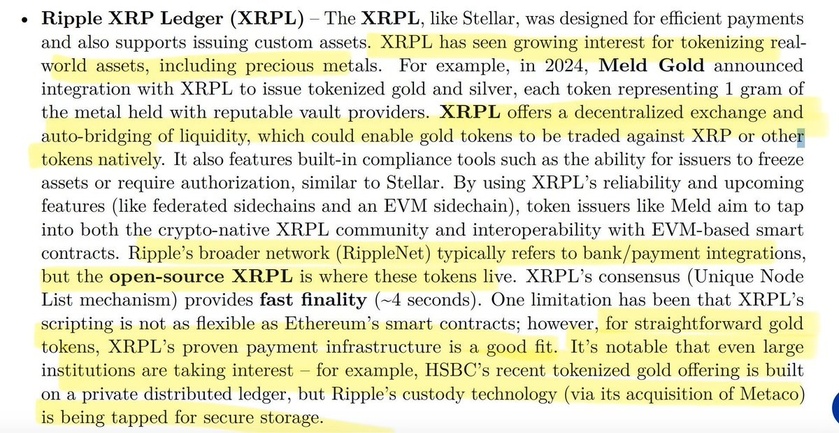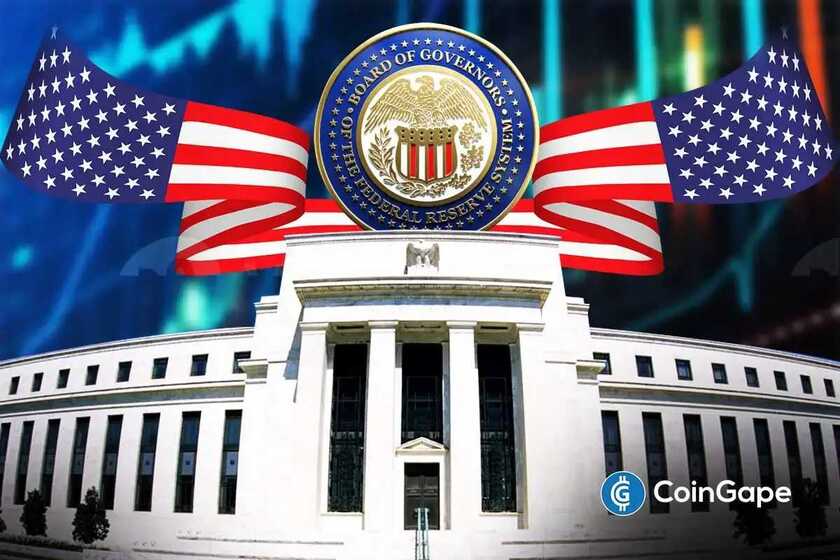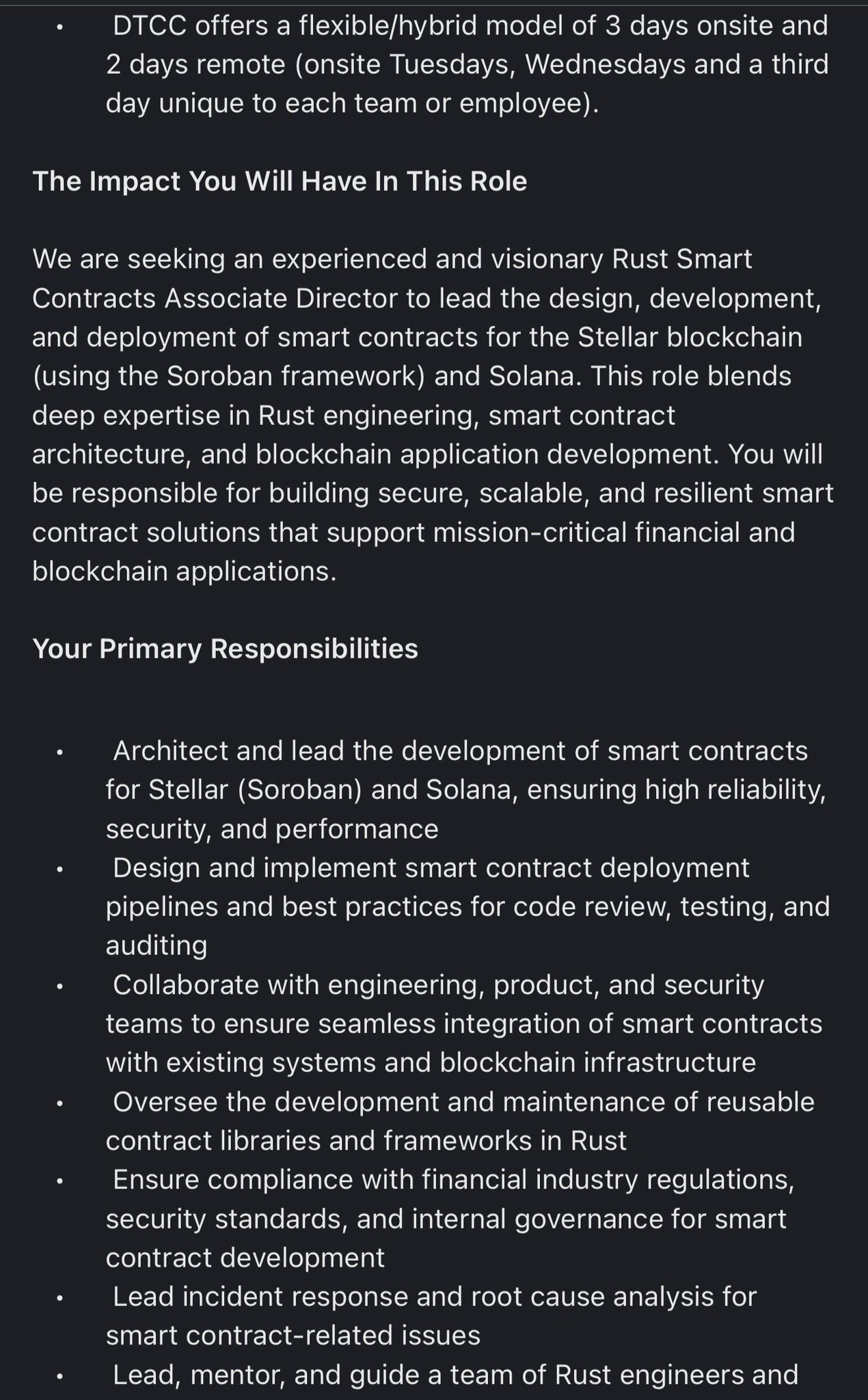Experts Discuss What Trump’s USD1 Stablecoin Needs to Survive the EU’s MiCA Regulation ⚖️
Since its launch in late March, World Liberty Financial’s stablecoin USD1 has achieved an impressive market capitalization, reflecting strong investor interest. If the creators want to maximize USD1’s reach by accessing markets abroad, particularly in Europe, they must confront MiCA’s extensive compliance list.
In a BeInCrypto interview, experts from Foresight Ventures, Kaiko, and Brickken stressed the importance of stablecoin issuers having substantial European bank reserves, operational volume caps protecting the euro, and transparent USD1 information to ensure transparency and avoid conflicts of interest.
🔹️USD1’s Search for Dollar Dominance
World Liberty Financial (WLF), a decentralized finance (DeFi) project heavily associated with the Trump family, officially launched USD1 a month ago. Through this stablecoin, WLF aims to promote dollar dominance worldwide.
So far, this initiative has been working well for WLF. According to CoinGecko, USD1 has now surpassed a market capitalization of $128 million and reached a 24-hour trading volume of nearly $41.6 million. The project has already released 100% of its total supply of 127,971,165 tokens.
For WLF to seriously establish dollar dominance across the globe, it will have to move fast and efficiently. This urgency stems from the need to surpass its main competitors, USDT and USDC. These rivals currently hold a massive market share advantage.
Additionally, there’s a need to maintain a competitive advantage against established currencies like the euro.
USD1 needs to access foreign markets and stand out from established competitors to achieve this. Should Europe become a primary target, USD1 must prepare to tackle numerous challenges head-on.
🔹️The EU’s Stringent Compliance Demands
The European Union (EU) became the first jurisdiction in the world to establish a comprehensive regulatory framework for digital assets across its 27 member states. This regulation, known as Markets in Crypto-Assets (MiCA), has been in effect for nearly four months. Through this legislation, the EU has confirmed how seriously it takes compliance with a defined regulatory regime.
“MiCA’s main requirements for stablecoins are: full reserve backing with liquid assets, strict reporting and transparency rules, a cap of 1 million daily transactions for non-EU currency stablecoins, a significant part of reserves (30% to 60%) must be held in EU-regulated banks,” Dessislava Ianeva-Aubert, Senior Research Analyst at Kaiko, told BeInCrypto.
The regulation is detailed and clear, leaving no room for interpretation. If USD1 wants to operate in this crypto market of 31 million users, it must ensure it meets every demand.
🔹️US Senators Flag Risks of Presidential Involvement in USD1
WLF’s announcement of a USD1 stablecoin immediately raised regulatory questions surrounding President Trump’s role in the project. Three days after the announcement, a group of lawmakers led by Senator Elizabeth Warren sent a letter to the Federal Reserve and the Office of the Comptroller of the Currency.
In the letter, the group asked both agencies to clarify how they plan to uphold regulatory integrity following the issuance of USD1.
The Senators cautioned that letting a president personally benefit from a digital currency overseen by federal agencies he has sway over is a big risk to the financial system. They argued that an unprecedented situation like this one could hurt people’s trust in how regulations are made.
“The launch of a stablecoin directly tied to a sitting President who stands to benefit financially from the stablecoin’s success presents unprecedented risks to our financial system,” they argued.
The letter further detailed situations where Trump could directly or indirectly affect decisions regarding USD1.
As things stand, USD1 isn’t well-prepared to follow MiCA’s strict reporting and transparency rules.
🔹️How Do Concerns Over USD1 Impact MiCA Acquisition?
According to Ianeva-Aubert, if USD1 doesn’t clear up doubts over potential conflicts of interest, this would affect its ability to apply for an operating license in the European Union.
“MiCA requires strong governance, including independent directors and clear separation between owners and managers. Issuers must have clear rules to handle conflicts of interest. If USD1 has any conflicts, this could make it harder to comply,” she said.
Ianeva-Aubert also highlighted that WLF still hasn’t released enough public information on USD1 to assess the degree of its compliance effectively. In particular, the stablecoin issuer has not disclosed the measures it would take to safeguard against market manipulation.
“While USD1 has announced partnerships with established providers like BitGo for custody, it is not clear if it currently meets all of MiCA’s anti-manipulation requirements, which include having market surveillance systems to detect suspicious trading patterns, regular transaction monitoring and auditing, clear policies for preventing insider trading, and other strict controls,” she added.
As of now, USD1 would likely fail MiCA’s transparency tests. However, industry experts pointed out other parts of the framework that might be even larger obstacles for USD1 to operate across the European Union.
🔹️Impact of the EU’s Reserve Mandate on USD1
When asked about the biggest regulatory hurdles USD1 would face in securing a MiCA license, experts’ responses were unanimous. The stablecoin would need to store a large portion of its reserves in a European bank.
This mandate has proven difficult for established stablecoin issuers seeking operations across the region.
“For example, Circle (issuer of USDC) had to create an EU entity and keep EU-issued USDC reserves with EU-authorized banks. For issuers meeting these rules could require some level of restructuring, strong EU bank relationships and more complex reserve management. This also means lower interest revenue, since EU banks usually pay less interest than US or offshore banks,” Ianeva-Aubert said.
This regulation aims to ensure seamless accessibility for European crypto users and traders. For Forest Bai, Co-founder of Foresight Ventures, USD1 could capitalize on this opportunity during the early stages of its development. By doing so, it could avoid some of the obstacles its competitors had to endure.
“While consolidating the token’s reserves in EU banks may prove difficult, USD1’s relatively small market size could work in its favor for MiCA compliance at this stage. Unlike established tokens, like USDT, that struggle to adapt, newer entrants that emerged from Circle demonstrate compliance feasibility,” Bai told BeInCrypto.
Yet, even as USD1 scales and its demand grows, other mandatory requirements could restrict its scope of success.
🔹️MiCA’s Transaction Volume Caps to Preserve Euro Dominance
As part of the MiCA regulation, the European Union has taken specific measures to safeguard the euro’s dominance. If a digital currency not denominated in euros were to become extensively adopted for daily payments within Europe, it could present a potential risk to the European Union’s financial sovereignty and the stability of the euro.
To contain this possibility, MiCA places volume caps on transactions used as a means of exchange within the EU.
“A key provision of MiCA that is often overlooked, but critically important, relates to transaction volume limitations for EMTs denominated in non-euro currencies. Where the daily average number of transactions used for payment purposes exceeds 1 million, or the average daily transaction volume surpasses €200 million, the issuer must cease new issuance and present a remediation plan to the regulator. These thresholds are designed to prevent systemic reliance on foreign-denominated EMTs and to protect the euro’s role in the Union’s monetary system,” Elisenda Fabrega, General Council at Brickken, told BeInCrypto.
In other words, MiCA establishes predefined limits on the transactional volume of such currencies. The EU initiates regulatory measures when these limits are exceeded due to widespread payment usage.
“Stablecoins such as TRUMP USD1 must implement monitoring tools and usage controls to avoid breaching these limits unintentionally. Issuers may be required to geo-fence, restrict retail adoption, or structure distribution to mitigate risk of triggering supervisory action,” she added.
Specifically, USD1 issuers must suspend any further digital currency issuance and provide a remediation plan to the relevant regulator, outlining steps to ensure their usage does not negatively impact the euro.
If USD1 wants to work in places where it can experience uninhibited growth, the European market might not be the best fit for this stablecoin. Other parts of MiCA also suggest this could be the case.
🔹️MiCA Limitations to Stablecoins as Investment Vehicles
EU regulators have been clear that stablecoins, or e-money tokens (EMTs), as the regulation refers to them, are payment instruments that should not be confused with investment vehicles. The MiCA framework has a few rules in place to prevent this.
“MiCA prohibits EMTs from offering any form of interest or benefit to holders based on the duration of their holdings. This restriction reinforces the classification of EMTs as payment instruments, not investment vehicles, and limits their use in structured products, yield-generating services, or decentralized finance platforms unless those platforms are also regulated under EU law,” Fabrega told BeInCrypto.
These limitations and the volume caps may make Europe an undesirable target for USD1.
“While MiCA creates a clear pathway for the issuance and trading of stablecoins within the EU, it also introduces operational restrictions that are material and enforceable. The transaction volume thresholds for EMTs, in particular, may constrain market expansion for non-euro-denominated tokens such as TRUMP USD1,” Fabrega concluded.
Given the circumstances, experts like Bai think WLF might want to focus on countries with better market conditions for stablecoin issuers.
🔹️Should WLF Consider the EU Market for USD1 Operations?
While the European Union has an undeniable crypto market presence, other jurisdictions have an even larger footprint.
”The EU’s crypto market remains comparatively small, with just 31 million users versus Asia’s 263 million and North America’s 38 million users, according to a report from Euronews. This limited market size may not justify MiCA compliance costs for projects, like WLFI,” Bai told BeInCrypto, adding that “Projects ultimately determine their own growth strategy. Given that, currently, the EU represents a secondary market for USD1, the project’s strategic priorities may naturally shift toward regions with less stringent stablecoin regulations to drive its adoption.”
These circumstances alone may prompt USD1 to reconsider its options.
“Although the EU has limited competition among stablecoin issuers, WLFI can make up for noncompliance, with aggressive expansion in regions, such as Asia and Africa. The USDT precedent has demonstrated that dominant players can maintain position while boycotting MiCA and the EU market. For USD1, MiCA compliance does offer EU access but appears non-essential to long-term viability, given alternative growth markets,” Bai added.
In fact, USD1 could start by gaining a competitive edge right at home.
🔹️USD1’s Political Backing at Home
With a crypto-friendly president in office –whose very crypto project officially announced the launch of USD1– the stablecoin has sufficient backing to make its mark.
“The bigger question here, however, is whether WLFI will want to push for a MiCA license at all, given it has the right set-up to thrive in the US with its strong political leaning,” Bai emphasized.
Looking past the immediate future, Bai underlined that if the US doesn’t keep developing supportive crypto regulations, USD1’s growth in the country could be held back following a government shift.
“For USD1, policy longevity is worth watching, as its post-Trump viability faces uncertainty, given potential US political shifts in the coming years. Even if WLFI strives to comply with MiCA now, the question is what about the years succeeding Trump’s tenure,” he said.
Nonetheless, failure to comply with a comprehensive framework like MiCA would be a blow to USD1.
🔹️USD1’s Path Amid Growing Appeal of Regulated Stablecoins
Based on Kaiko’s research, users are growing in preference for regulated stablecoins.
“MiCA-compliant stablecoins have shown robust growth during recent market turbulence, according to Kaiko data (as opposed to non-compliant options), showing that users increasingly prefer regulated options,” Ianeva-Aubert revealed.
Given this reality, USD1’s failure to comply with the EU’s regulations, should it ever even consider applying for a MiCA license in the first place, could have negative consequences for the project’s long-term viability.
“If USD1 can’t meet MiCA’s rules, it would likely be blocked from the EU market, just like USDT was for most European users. This would limit its growth and potentially impact its credibility amongst institutional users,” Ianeva-Aubert concluded.
Regardless of the markets WLF evaluates in its efforts to increase the reach of USD1, compliance with general stipulations concerning transparency, legal architecture, and real-time transaction oversight could be conducive to its eventual success.
https://beincrypto.com/experts-discuss-trump-usd1-stablecoin-eu/






























